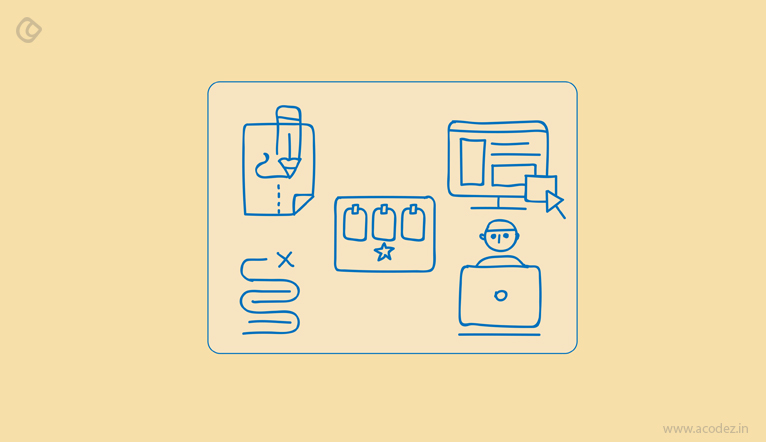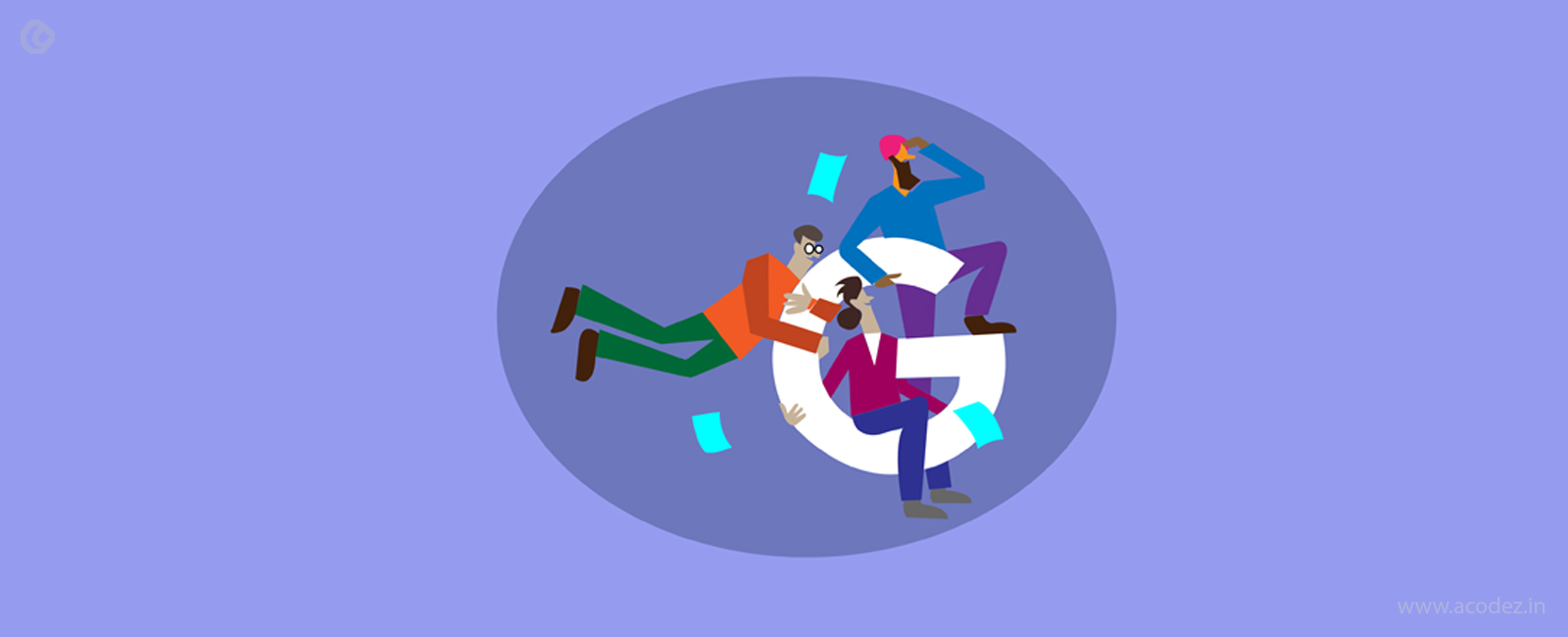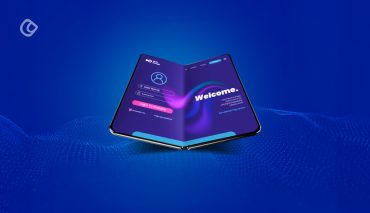Now is a startup age with many new startups being found on a regular basis. Each of them has their own unique idea which they want to bring forward to their customers. While bringing a new product, service or a feature into the market, there are a lot of risks involved. Understanding these risks is quite necessary as if handled properly this may help you to yield better results. In such a case, a design sprint turns out to be quite useful. A design sprint is a time-constrained five-phase process that makes use of design thinking to reduce the risk while bringing a new product, service or feature into the market. It helps you to identify goals, validate assumptions, and decide on a product roadmap. This, in turn, helps you plan ahead to provide a better UX design experience to your users. With the help of design sprint, even without the going into the full cycle of the idea, build, launch and learn you can get an idea of the opportunities available and also be able to gather the feedback without the need to actually develop the project and spend huge amounts on the same. It helps you to get an idea of the finished project and customer reaction as well.
What is Google design sprint?

Google design sprint is an agile user experience and product design methodology used by businesses. This Google product is a five-phase framework and helps you to answer some crucial business questions which thereby helps you to launch the products faster. It aims to put the business, technology, and user in the center and then develop the project. Some important answers of the project is answered with the help of designing, prototyping and testing out new ideas.
Ever since its inception in 2010, it has helped a number of organizations to successfully launch their projects and help save their time and money without compromising the quality.
How does Google Design Sprint work?
This is mainly achieved by the process of rapid prototyping and user testing. Even if it turns out to be efficient in larger projects and is mainly used by big organizations, even smaller organizations can put it to use and make sure that they are able to complete the project in time. It also helps you to incorporate new ideas into the project, focus on the user-centered thinking, and align your team with a shared vision.
History of Google Design Sprint:
It has been based on the years of knowledge of 300 different business strategy, design thinking, and user research methods of from various prestigious organizations like IDEO and Stanford d.school. After studying these, the most effective ones were evolved into the framework. The framework supports both divergent thinking and convergent thinking. With the help of divergent thinking, you can do any creative brainstorming. This provides you with multiple possible solutions for your problem. Whereas in the case of convergent thinking, you can make use of the defined logical steps to arrive at a solution.
However, it is necessary that before proceeding with Google design sprint, you must have a proper idea of the aim that you wish to achieve and the challenges that you face.
Some situations in which Google Design Sprint may turn out to be helpful:
Google Design Sprint may be used to carry out in a number of fields. Some of these are as follows:
- While launching a new product or service.
- Adding new features to your product.
- Improve the opportunities for your product.
- Solve a problem with your product.
- Provide better UX design to your users.
- Speed up the development process.
- Extend an existing experience to a new platform.
- Empower your team.
- Enhance sharing and collaboration amongst the team members.
Whole Google Design Sprint process:

The whole Google Design Sprint process is undertaken in 5 different stages. Each of these stages comprises of various UX design processes like user interviews, user testing, and user research. You can move back and forth and make any changes as required. These are:
- Unpack
- Sketch
- Decide
- Prototype
- Validate
Unpack:
In the unpack phase of the Google Sprint, it is necessary that you get the concerned team members together who tend to achieve a common goal. It is necessary that you choose the team members from all the levels of your organization like product managers, UX designers, engineers, and researchers. This phase helps you to enhance the understanding of the project. In this phase, it is necessary that the team members ask right questions that can help find out the problems. This may help you to tackle the problem in a better way and also get an idea of the different problems that are encountered by different people.
After assembling the team, all the team members are asked to contribute their knowledge to the team under the guidance of an external facilitator. The facilitator must be chosen that must be able to help the team focus. Here you may also put various elements to use like presentation, competitive reviews, problem demonstrations, solution demonstrations, user personas, analytical data and success metrics. In such cases, creating different user personas describing the products users along with the creation of their whole journey from the product discovery to becoming expert users. Here the characteristics of the users, their needs, motivations, values, can be specified and based on the same the solutions must be designed.
Sketch:
After finding out the problems in the unpack phase of the Google Design Sprint, it is necessary to find out the solutions to the problems. Each of the team members in this phase must be asked to find out the solution for the problems encountered in the unpack phase. In case the problem is large scale, it must be broken down into manageable chunks and then find problems for these individual chunks. It is necessary to get as many possible solution ideas as possible for the problems encountered. It is also necessary for this phase to find out innovative answers as these may help you to stand out your products and services from the rest. It can also help you to design an innovative way to solve the problem which may turn out to be quite beneficial.
Decide:
After the successful completion of the Sketch phase, it is necessary to find out the best possible solution for the problem encountered. It is because you cannot work on all the possible solutions as it will lead to the wastage of time and money. Before choosing an idea to be taken into consideration and take it to the prototype phase, it is necessary that you have an idea of how the solution may conflict with your users, objectives, resources, abilities etc. It is also necessary to take into consideration the budget, users, technology and business drives. Only after properly analyzing it, you should proceed with a solution that can be chosen for prototyping. However, more than one solutions can also be taken in the prototype phase. However, it must only be done after a proper speculation and then decide which ideas must be taken forward. This can be reviewing different ideas and then vote for the best options. The solutions that are not feasible must be removed in the earlier stages. If possible, you can also create a storyboard for your ideas. This thereby facilitates the user’s interaction with each and every step thereby facilitating UX design.
Prototype:
After the completion of the decide phase, the next important step that comes forward is the Prototype phase. It helps you to test different ideas and saves the time, money and other resources. If used properly, it can also help you to predict if a particular solution may turn out to be a success or a failure. In this phase, you are to create a prototype that can be tested by the users. If possible, the prototypes thus created must be interactive. It is also necessary that the prototype must be accurate, polished, clear and easy to test with actual users and receive their feedback. This helps you to achieve amazing results as it can help you get a better response from the users.
There are numerous tools available that can help you in the prototyping phase. However, it is necessary to choose the tool in which you are proficient.
Validate:
Last but not the least, comes the chance of validation. In this process, the users are brought together and are asked to interact with the prototype. Then with the help of making notes, they come to know about any new problems. You can also ask certain questions with the users to get an idea of how the users interact and what are the problems that they face. It is also necessary that in such a case, you must try out users must vary to get an idea of the problems faced by different users. It must be reviewed by each and every team members like technology team to figure out the complexity, planning team to figure out the time required to complete the project and accounts team to have an idea of the budget that can be allocated. Only after the proper research, you must proceed with a plan and put it to execution.
These steps must be followed again and again to make sure that the best solution is provided to the users. It also helps you to provide a better UX design and also helps you to provide better products and services to the users.
Benefits of using Google Design Sprint:

Google Design Sprint turns out to be quite beneficial to the users. Here are some of the ways in which it may turn out to be helpful to you.
- Provide quick and clear solutions to a problem.
- Validate the challenges encountered.
- Understand the feasibility of a solution.
- Provide cost-effective solution for a problem.
- Utilize the resources to its fullest.
- Get feedback on the prototype.
- Identify the potential of the solution to the problem.
- Increase in the participation of the individuals of the organization with more dedication as they believe that their opinion in the organization matters.
- Increase in the creativity of the people.
- Help generate new ideas and provide a sense of innovation to the employees.
Summary:
Google Design Sprint helps you to tackle even the most complex problems with ease and also lets you identify the feasibility and the future of the project. Based on your requirement, you can opt for Google Design Sprint principle and make sure that you are able to get the task done quickly and easily. If you too are planning to provide a better UX design to your users or are planning for a new project, it is time to conduct user research, gather your team, find a right place, gather the supplies and go ahead with the Google Design Sprint. This may help you to get an idea of the outcome of the project and also help you to save time and money.
Acodez is one of the best UX design agencies in India. Latest technology trends of website design are followed to provide the clients with the best web services to provide better UX design experience to the users. This, in turn, has helped the organizations get better returns on their investment.
Looking for a good team
for your next project?
Contact us and we'll give you a preliminary free consultation
on the web & mobile strategy that'd suit your needs best.










Hiiiiiiiii….This is really good one article . thanks for sharing with us , Keep up the work……
Thanks for sharing the valuable information.It’s a very nice blog.